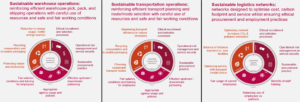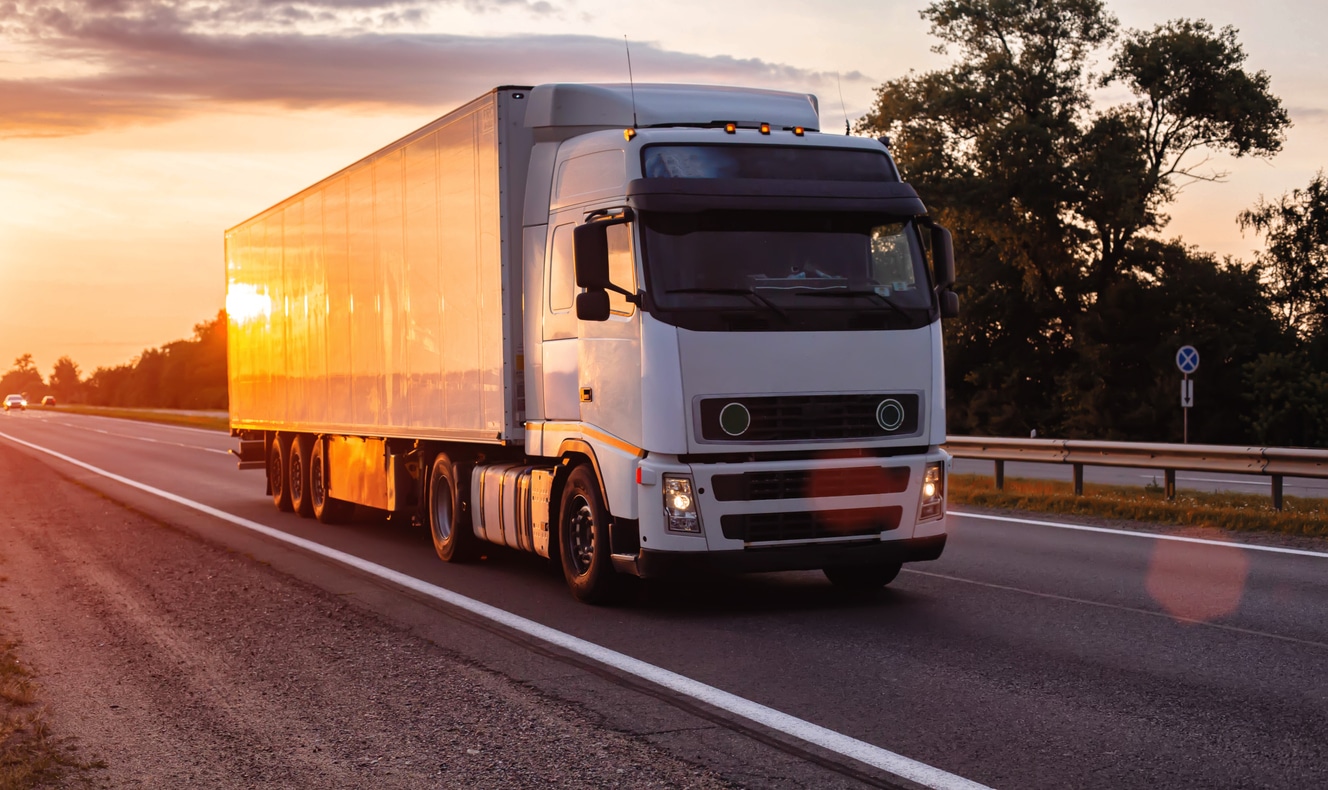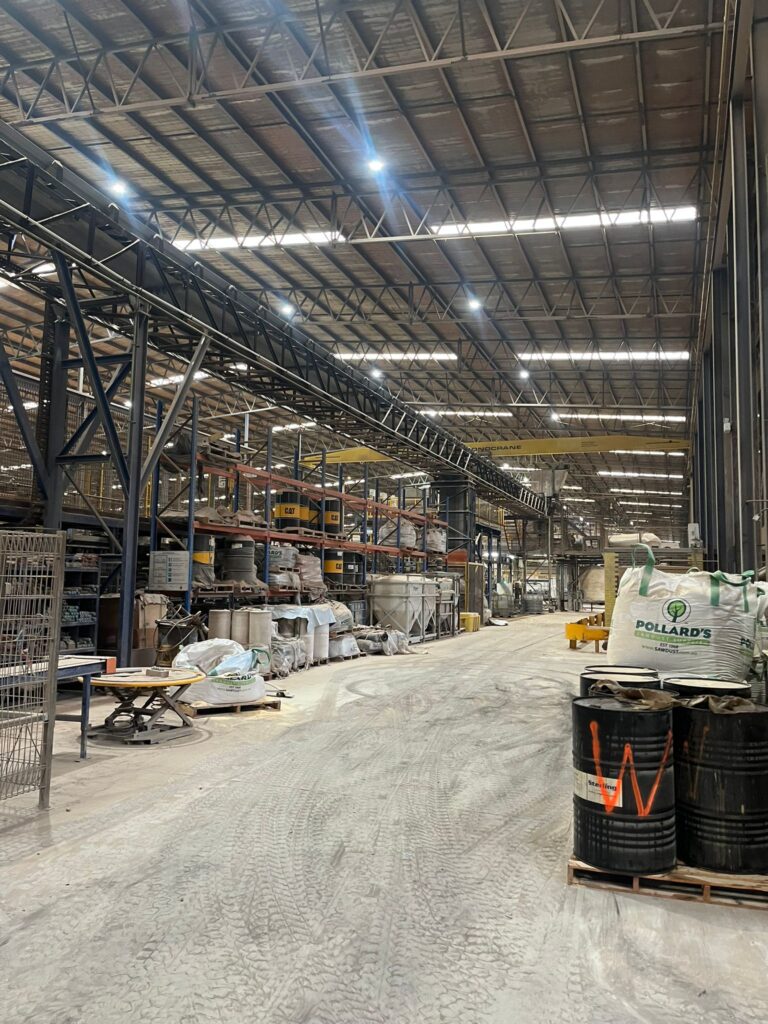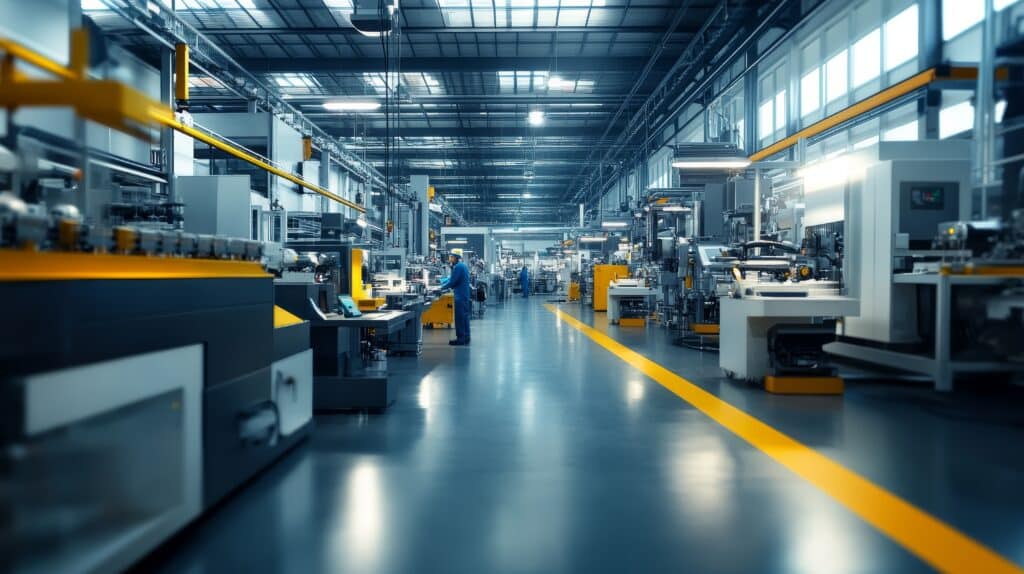If you ask someone about the “future of sustainable logistics”, they might start talking about drones dropping Amazon parcels at your door or driver-less, net-zero trucks powered only by electricity. These are cutting edge, revolutionary ideas, and there is no doubt that over the next few decades big changes will be needed to meet the UN sustainable development goals, and the UK government proposal to end the sale of non-net zero HGVs by 2040. Companies should be, and are, thinking seriously about their route to net-zero – the strategic direction, and where they are putting their resources to have the greatest impact long term. In fact, a recent survey showed that over 90% of logistics business directors expect the importance of sustainability to increase over the next 3 years.
Businesses often understand the importance of sustainability but struggle to know where to begin. The reality is that there is still a lot of low hanging fruit in logistics operations – efficiency improvements that not only make business sense, but also reduce environmental impact in the short term. Starting with these means companies can see results quickly, which gives momentum and motivation to the longer-term sustainability strategy.
Start with the low hanging fruit
1. Use less fuel by training and incentivising your drivers
Driving style accounts for up to 20% of fuel consumption in HGVs (Heavy Goods Vehicles). Encouraging and training drivers to drive more efficiently (e.g. anticipating stops, avoiding sudden acceleration and deceleration, utilising cruise control) will therefore reduce costs and carbon emissions, without the need to change your fleet in any way.
Sainsbury’s has successfully implemented this idea, achieving a 1.5% year-on-year fuel efficiency improvement for the past 15 years through fuel efficiency initiatives. These initiatives include setting monthly fuel efficiency targets, monitoring tyre pressure, incentivising good behaviours by publishing driver league tables, and through recognition schemes such as the Driver of the Year programme. Overall, Sainsbury’s has saved 8.5 million litres in fuel since 2004/05, with a consequent reduction in emissions.
2. Maximise efficiency of your existing warehouse infrastructure by embracing technology
Lighting and temperature control use huge amounts of energy in warehouse operations, accounting for up to 80% of total energy usage on site. Therefore, increasing the energy efficiency of these systems will significantly reduce your carbon footprint, as well as your utilities bill. Of course, upgrading to a more modern, efficient infrastructure will deliver benefits, but you can also make improvements with existing systems with little or no investment.
For example, lighting usage can be reduced by installing daylight sensors so that lights are switched on only when daylight levels are insufficient, and occupancy sensors can be used to ensure that only areas in use are lit.
Artificial Intelligence (AI) based systems, such as BeeBryte, use data including weather forecasts, business activity and occupation patterns to anticipate heating and cooling needs, performing much better and pro-actively than the traditional thermostats or /feedback loops. When DHL installed BeeBryte at its logistics warehouse in Singapore, they saw a 29% reduction in energy usage, without needing to change their existing temperature control systems.
3. Look outside your own network to maximise vehicle fill
In the UK, HGVs are empty on average for 30% of their distance travelled, and when laden, on average only 61% utilised. Often companies focus only on their own network to improve efficiency and vehicle utilisation; however, gains can be much greater when networks are formed with other, like-minded businesses who can utilise the same routes and warehouse space.
Freight exchange platforms, such as Returnloads and CargoCore, are a great way to make use of return journeys. These platforms use tracking and load matching technology to identify and recommend loads that could fit your requirements. Some also interface directly with your existing Transport Management System to reduce the manual work required to coordinate loads.
As well as freight exchanges, forming partnerships with local businesses can also be very successful. For example, a collaborative initiative between retailers on Regent Street, London resulted in an 80% reduction in HGV and LGV movements associated with retail in the area. To achieve this, a retail consolidation centre was set up outside the London congestion zone, where deliveries of participating retailers were consolidated and delivered in a single consignment.
4. Review and reduce your packaging usage
Packaging is a vital part of moving products within the supply chain. By reviewing where you are using packaging and understanding waste streams, there can be a lot of scope to reduce the environmental impact of packaging waste. One company doing a lot of work in this area is Nike. They have switched from single use to reusable cartons where possible and reduced the weight of the shipping cartons used to transport products around the world. They also assessed current packaging and are working on eliminating unnecessary dunnage (filler material), even down to removing toe stuffing in shoes. At the end of FY21, 84% of Nike distribution centres had eliminated dunnage.
5. Start measuring your impact
Although not strictly an action that will affect the environmental impact of your logistics operation directly, we have included this as an important activity for all companies to start now, if not already doing so. Many companies have improved sustainability as a strategic ambition but struggle to know where to start. The answer is always the same – start by measuring your current impact, and only then will you be able to focus your effort and investment where it matters.
The first step to this is identifying the right metrics and start measuring them consistently. For logistics this would usually include fuel usage, energy usage, equivalent carbon emissions and waste. Once established, this data can be used to set realistic targets and drive improvements.
Sustainability starts today
As sustainability is no longer a “nice to have” but rather an expectation from all businesses, governments, and consumers worldwide, taking action to reduce environmental impacts of your logistics operation should be a business priority.
Regardless of where you are on your journey to net-zero, delivering quick wins by identifying your operation’s low hanging fruit is a great way to gain momentum and motivate your workforce. These initiatives often also come with financial benefits, and savings can be re-invested in projects that will help you achieve your longer-term strategic sustainability goals.
How can we help
Argon & Co have a proven track record of helping clients improve their warehousing and transport operations. A three-step approach can help by; identifying sustainability dimensions and drivers, assessing current performance, and recommending achievable and meaningful solutions and targets based on your business’ sustainability strategy and appetite.
We take a holistic approach to sustainability, which goes beyond only the environmental aspects and includes social and governance elements (ESG) – we help clients consider the full range of levers relevant to their business and identify where actions should be taken to have the maximum positive impact.

Authors: Rachel Tooley and Caline El Mir







